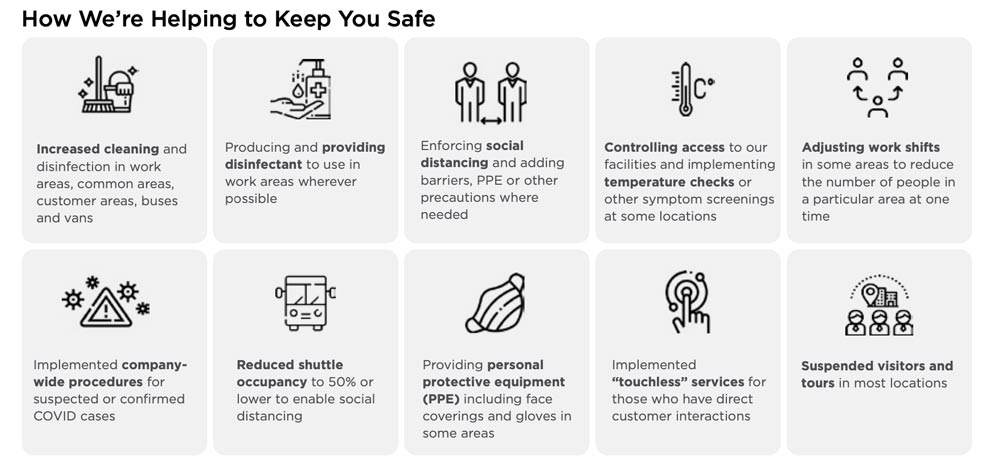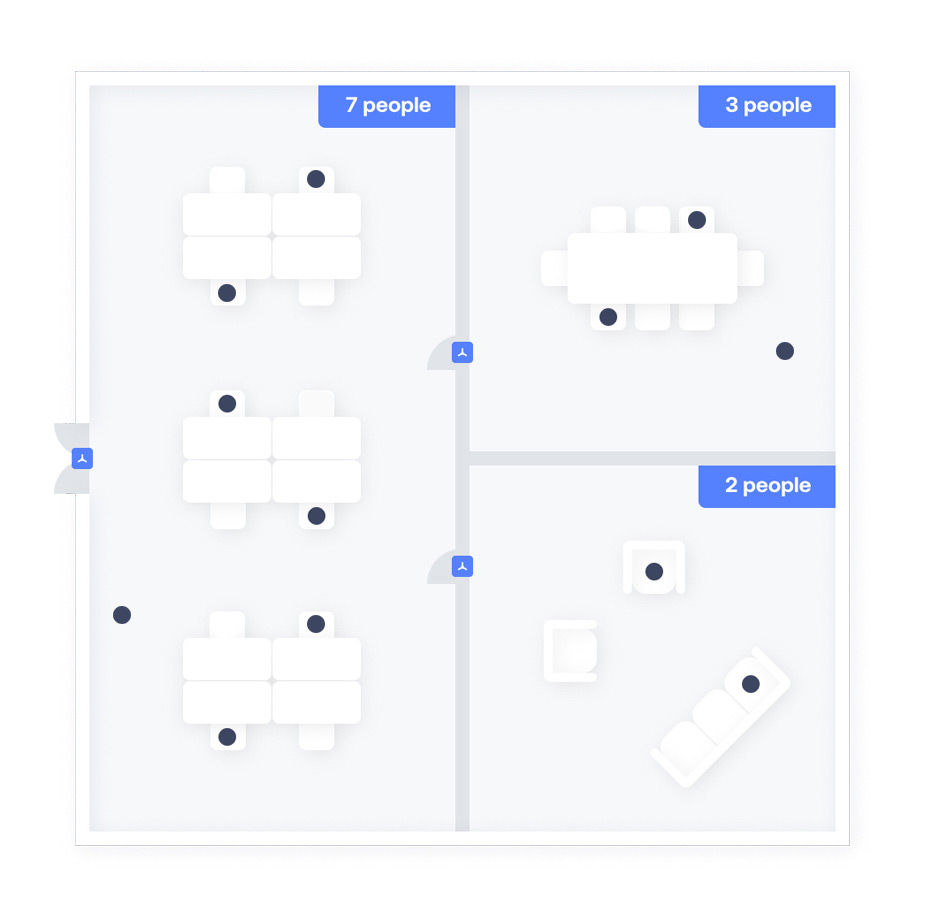There is no standard playbook for how to return millions of people to work. But that doesn’t matter.
2021 is the year of return to work. Companies have no choice but to figure out how to bring their employees back to the office.
Fortunately, companies like Tesla have already invested incredible time and resources into shaping return-to-work playbooks that other companies can use for guidance and a starting point.
While not every approach will apply to you, four key takeaways from Tesla’s playbook can help inform your own return-to-work strategy (create a cross functional crisis team, show employees how you’re keeping them safe, monitor real-time occupancy, and prepare employees for the new normal).
You can download Tesla’s return-to-work playbook here.
Create a cross-functional crisis team
Tesla created a crisis management team early on in the process. This team includes representatives from EHS (Environment, Health, and Safety), Security, Legal, Human Resources, Communications, Tesla Travel, and the company’s Corporate Physician.
The diversity of your cross-functional crisis team ensures more complete problem-solving.
A cross-functional crisis management team gives you diversity — you have representatives from each of your key departments at the table. This diversity serves as an internal checks-and-balances system. EHS may have an idea on employee temperature checks — but what legal hurdles are there?
These decisions should be discussed and made by representatives from all your key departments.
Show employees how you’re keeping them safe
As much as 64% of U.S. workers are anxious about returning to the workplace, according to a survey conducted by The Harris Poll (PR Newswire, 2020).
Reminding employees how you’re keeping them safe will make your return to work more successful.
For Tesla, their playbook itself serves this purpose. Sections like “How We’re Helping to Keep You Safe” give employees an at-a-glance look at every step Tesla has taken to be COVID-compliant:

The company also displays the signs above throughout its campuses, including in their shuttles and vans.
Signage is a significant part of Tesla’s return-to-work policy. They display signs reminding employees not to come to work if they experience COVID symptoms and to use hand sanitizer and to remain socially distant. These signs reinforce healthy practices and help employees feel at ease.
Other companies go one step further and use Density’s Safe display to show any space’s real-time occupancy. This gives employees the confidence to travel anywhere on their work campus, knowing what to expect when they arrive at any space.
Monitor real-time occupancy and traffic
Monitoring how people actually use Tesla’s space helps the leadership team verify compliance and adjust as needed.
Does the restroom cleaning schedule align with actual use? Do employees maintain six-foot distancing at entrances during high-volume times? Do smaller rooms (like meeting and break rooms) have the proper occupancy limit to ensure social distancing?
Companies use Density’s anonymous people counting sensors to answer these questions — without violating employee privacy, such as lowering the occupancy limit of certain spaces and staggering schedules to reduce volume swell.

By monitoring foot traffic and usage patterns captured by Density, companies can also identify whether new restrooms and break rooms are needed — and where they would have the greatest impact.
Prepare employees for the new normal
Daily routines give us a sense of control. When our routines change, we feel like we’ve relinquished control. For many employees, a shift to remote work was a drastic change in routine.
Some employees may welcome a return to work as a return to familiarity — to a portion of their day they can control. But the workplace of 2021 will not look like the workplace of 2019. Changes could impact employees’ sense of comfort and security (such as new one-way foot traffic patterns and closed-off spaces).
The workplace of 2021 will not look like the workplace of 2019.
Sharing a video walkthrough of your workspace will help employees see changes before they arrive (think of it as a virtual tour of the new campus). Tesla employees, for example, must watch a new safety training video, “as part of their preparation on what to expect when they return to work and as Tesla resumes operations.”
The video helps employees understand what work will look like and reminds them how to stay safe (including demonstrations of proper hand-washing and PPE).
Your return-to-work playbook also prepares employees for this new normal. But don’t wait for your playbook to be finalized to communicate with your team. Living through a pandemic is traumatic — it feels like we have no say in what we can do, where we can go, and who we can see. Early and consistent communication is key.
The return-to-work problem is two-fold: cultivating safety in the workplace and cultivating the appearance of safety. Yes, of course you need to protect employees. But you also need them to believe you’re protecting them.
Be unabashedly transparent with your employees while your crisis management team designs your return-to-work policy. This gives employees a sense of responsibility, control, and comfort. Their insight can also help inform your preparation plans.
